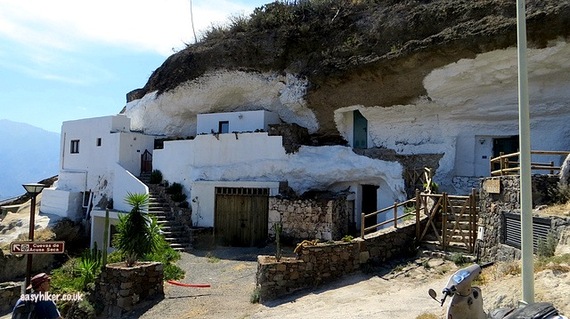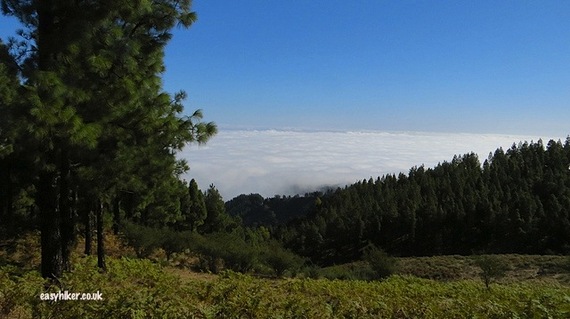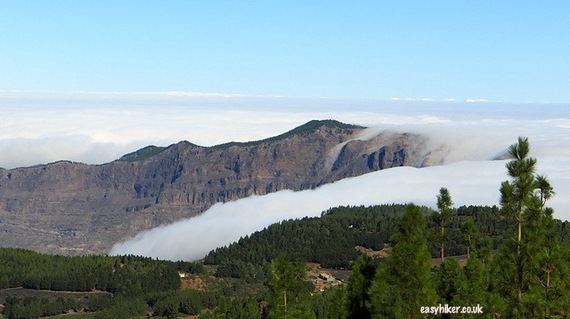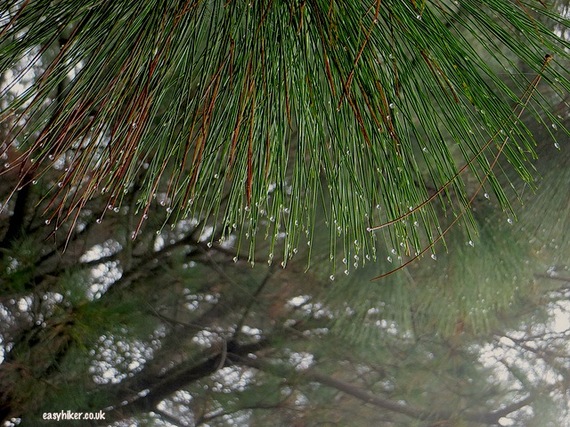It is often said that Gran Canaria, an island roughly the size of Greater London, contains the multitudes of a small continent. The island is home to one of Spain's largest cities (Las Palmas), to deserts and lush forests, to near-tropical vegetation and to barren volcanic landscapes that are reminiscent of Utah or Arizona. What makes Gran Canaria truly unique, however, is the clouds.
In most places on earth, clouds are something you watch either from below, or, more rarely, in the autumn or on early mornings in the spring, from the inside. "They only block the sun, or rain and snow on everyone" -- and that's without mentioning what they can do to a perfectly good view on a foggy day.
Gran Canaria, however, is different: when the incoming trade winds -- bringing with them humid air from the North Atlantic -- find their way south is blocked by the nearly 2000 meters high peaks of the island's central mountain range, they get stuck over the warm coastal lowlands, ensuring that there is -- under certain weather conditions -- one part of the island that breaks through the low-hanging cloud cover into a land of azure skies and perpetual sunshine. Which means that, on a single day, in Gran Canaria you can look at clouds from both sides now, bows and flows of angel hair, and ice cream castles in the air ...
But wait, there's more. The mountainous stone wall that stands in the way of the clouds, blocking their passage from the (relatively) lush north to the more barren south, has a gap in it near the Caldera de Tejeda, the most Grand-Canyon-esque landscape you can find anywhere in Europe, and if clouds have built up in sufficient numbers, you can see the moist air pour through into the volcanic crater where it almost immediately evaporates in the hot and dry desert atmosphere. This is not quite a waterfall, more of a "cloudfall," and if nature has a more mind-blowing spectacle to offer anywhere on this planet, I would very much love to see it.
You can observe this spectacle from various places up in the mountains, including the viewing platform just underneath the top of the Pico de las Nieves, the island's highest peak. When we were taken there, even our driver -- who chauffeurs visiting journalists and such folks to sights around the island almost every day -- was muttering to himself how "incredible" this all was, running around frantically with his cellphone camera to cover as many angles of the phenomenon as possible. This is indeed a third, entirely new way of looking at clouds: I wonder what Joni Mitchell would have done with that.
Clouds in Gran Canaria, however, provide more than grand theatre. They are extremely important for the ecosystem, more often than not supplying the vegetation with the only water they are likely to get: Gran Canaria can go without any proper rain for periods of up to one year.
In the absence of proper precipitation, plants and trees on the islands have developed ways of making do with "horizontal rain" as clouds are also known on the island. The native pine tree with its 20 cm long needles, for example, manages to "milk the clouds," extracting up to 20 liters a day.
The best way of experiencing cloudfall, the land beyond the clouds and the volcanic moonscapes of Gran Canaria is by walking around the Caldera de Tejeda, starting at the Cruz de Tejeda, an ancient pilgrimage site, and proceeding counterclockwise around the rim of the Caldera in the direction of Artenara. This should take you no more than three hours.
If you still have energy after that, take a trip to the near-by caves of Acusa, ancient as well as modern homes that have been carved into the soft volcanic stone. Even in the 21st century, there is no better way of keeping cool at summer temperatures of well over a 100 degrees F.

You can find more information about hiking trails in Gran Canaria on easyhiker.co.uk and on the website of the local association for the promotion of walking holidays.




